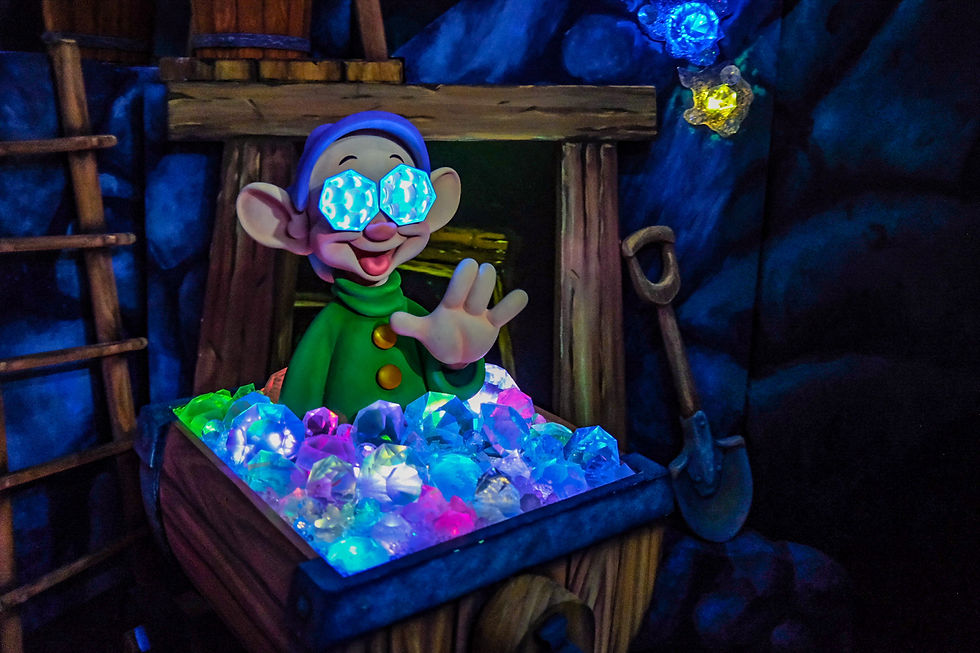Gnomes: Earth Spirits of Renaissance Mythology
- Sylvia Rose

- Oct 13, 2023
- 3 min read
Updated: Nov 1, 2024
Beloved in gardens, gnomes bring blessings of Earth. Thought to dwell in underground tunnels, caverns, soil and rocks, chthonic gnomes emerge in Renaissance times. Held responsible for natural disasters such as rockslides, they can also bring wealth and prosperity.

The word gnome comes from Renaissance Latin gnomus. It's first used in A Book on Nymphs, Sylphs, Pygmies, and Salamanders, and on the Other Spirits by Swiss polymath Paracelsus, published posthumously in 1566.
Paracelsus rises to prominence as a physician, alchemist, lay theologian and philosopher of the German Renaissance. His discoveries are an important part of the medical revolution of the time. For such ideas as adding minerals to medicine, he's known as father of toxicology.

Paracelsianism is the early modern medical movement inspired by the study of his works. He is admired in the Rosicrucian movement of the 17th century and has influence as a prophet or diviner. In the German Renaissance, Paracelsus also reintroduces opium to Western Europe.
According to Paracelsus there are four elemental beings, each corresponding to major elements: Salamanders to fire; Gnomes to earth; Undines to water; and Sylphs to air. Paracelsus uses Gnomi (gnomes) as a synonym for Pygmæi (pygmies).
He describes them as two handspans high and gives them the ability to move through solid earth as humans move through air. The term gnome is thought to come from Latin gēnomos (from Greek γη-νομος or "earth-dweller").

The gnomes of Switzerland are considered the reason for a disastrous landslide of 1618. They are pouring gold down a vein for the humans, but the humans get greedy. Upset, the gnomes destroy the village.
In nature gnomes echo the concept of dwarfs and other chthonic figures. Unlike dwarfs who can stand the height of a human, the original gnomes are created small as described by their maker. By this time, dwarfs and elves already assume miniature stature in tales and literature.

During the Renaissance the idea of gnomes catches on like syphilis, or the "French disease" but with a better reception. Paracelsus spends much time and energy trying to find a cure for syphilis. To treat it he recommended mercury in its inorganic compound form.
Meanwhile gnomes found their way into literature and mythology. They appear in Pope's 'Rape of the Lock', a satirical work of the early 18th century. Soon they began popping up as house and garden spirits instead of wild earth beings.
House spirits such as Kobolds and chicken entities play important roles in Germanic mythology. With their ties to the Earth, gnomes are at home in the garden. Unusual rocks are considered gnome stones, with mystical energies.

Gnomes first come into use as lawn ornaments in the 19th century. It's a passing fad, but a gnome resurgence after the Second World War has them grinning from gardens throughout the land.
The first plastic garden gnomes allowed mass manufacture in the 1960's and 70's, and the little guys are modeled after the Seven Dwarfs prototype of Disney's Snow White (1937). Today this is a popular image of gnomes.
As for Paracelsus, he looks further into medical research and study. His radical ideas are at first discouraged then outright banned. He dies in Salzburg at the age of 48. His legacy of science, medicine and gnome culture lives on.

Non-Fiction Books:
Fiction Books:
READ: Lora Ley Adventures - Germanic Mythology Fiction Series
READ: Reiker For Hire - Victorian Detective Murder Mysteries


